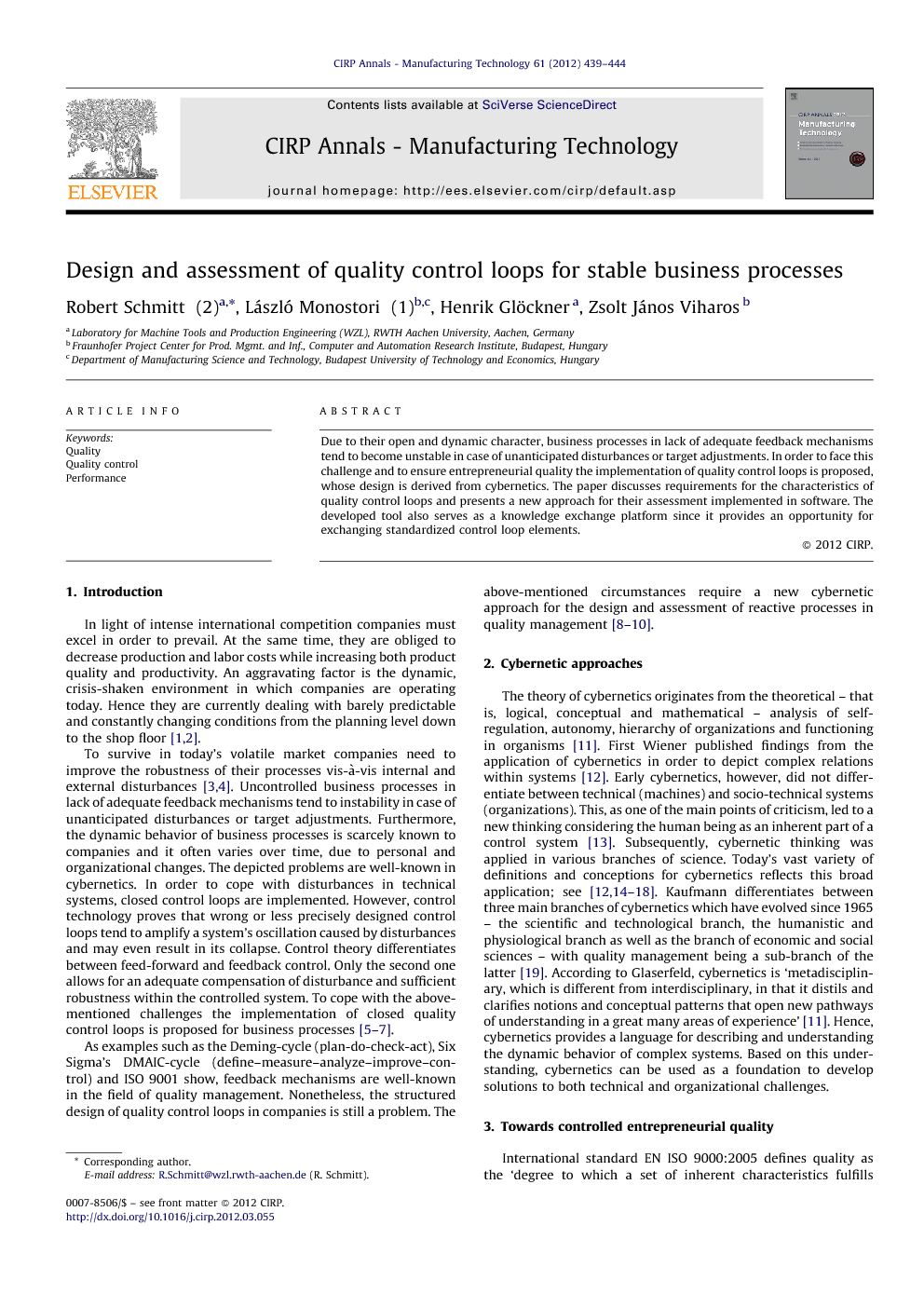ترجمه فارسی عنوان مقاله
طراحی و ارزیابی از حلقه های کنترل کیفیت فرآیندهای کسب و کار پایدار
عنوان انگلیسی
Design and assessment of quality control loops for stable business processes
| کد مقاله | سال انتشار | تعداد صفحات مقاله انگلیسی |
|---|---|---|
| 4808 | 2012 | 6 صفحه PDF |
منبع

Publisher : Elsevier - Science Direct (الزویر - ساینس دایرکت)
Journal : CIRP Annals - Manufacturing Technology, Volume 61, Issue 1, 2012, Pages 439–444
ترجمه کلمات کلیدی
- کیفیت - کنترل کیفیت - عملکرد
کلمات کلیدی انگلیسی

